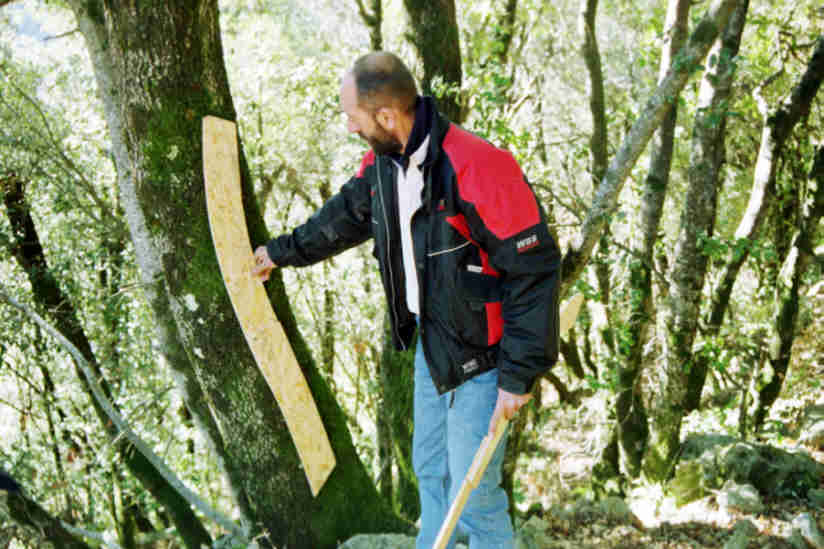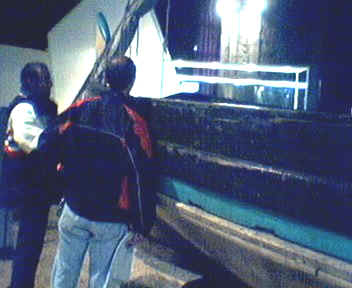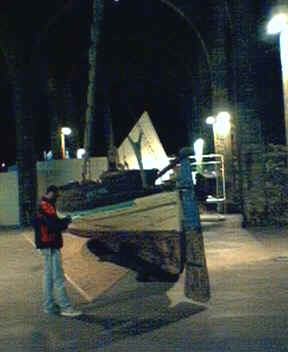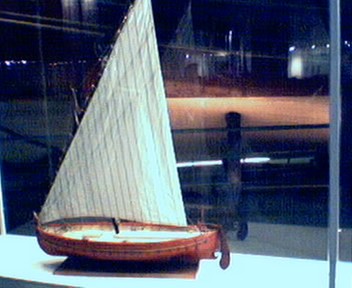|
Idéal : The Restoration |
Pictures taken on November 2002:
 |
|
 |
Another view of the deck. From the
outside, the damages don’t look that important.
|
 |
From
the inside, one can see clearly the fire damages: the mast has burnt, but
the gasoline tank is undamaged, proof that it is not responsible for the
fire.
|
 |
Another view of the inside. The shell is burnt . Up to
90% of the ship has to be restored.
|
Last winter a preliminary work has been done for wood supply.
|
With Yves Bernadou (picture), we ran across the Vallespir in order to choose the oaks with the correct bend. They were timbered according to the right moon, and sawn down to 8 cm thick planks, throughout the mobile hacksaw of Sébastien Frérot, then brought to the solar dryer in Saillagouse, held by the local chamber of trade.
(picture taken in February 2002)
|
 |
|
|
On November the 15th. We were visited by S.
VILLEVIEILLE, in charge , through the D.R.A.C and the Conseil General of
drawing up an inventory of the maritime heritage of Catalogne. We consider
it proudly as a mark of interest. ( Picture, from left to right: S.
Villevieille and Y. Bernadou.)
|
![]()
We pay a visit to the maritime museum of Barcelona
On November the 25th, 2002,
we have been invited at the Museum by Enric, one of
the curators and by the museum carpenter. We planned
to see the “Jean et Marie”, a “sardinal” built by Bonafos in
Banyuls in 1906, two years before IDÉAL.
|
|
The Carpenter tells me the true story of the boat. It
is by mere chance that she was saved by Clovis Aloujes, from Collioure, in
the mid 7O’s. He called the Museum to offer them the boat , that was in
perfect shape, rather it was burnt. The vision of the Jean et Marie,
standing in the middle of the
huge hall, is overwhelming. We stand respectfully silent, like in a
cathedral... |
Studying the details:
|
We take close look to many details that
are likely to help us, and
take measurements. The Jean et Marie is a little smaller
than Ideal. She was restored alike
she was at the year of construction (1906). At that time, boats were not
motorized. They were pulled ashore on the beach
by hand. We have to make a crucial decision. What year is to be chosen as reference point for restoration? Ideal was modified in 1930, 1948, and then again in 1975 and 1995, at least! Should we do without the engine? Come back to 1908 and make the ship a real sailboat? I have a dream...
|
 |
 |
Shape of the stern: But
Bernadou wakes me up. In most of the harbors nowadays , it is prohibited to maneuver
without an engine. We will be dealing with peoples’ security, and
not only with the ship. He is right and we decide to settle for 1930. At that
time, the
engines are becoming reliable, the boats are modified accordingly: the prow is of a sailboat, the stern is somewhat
rounded off for the shaft of the
propeller.
|
THE SANTA ESPINA:
|
On our way out, we stop by the model of the Santa
Espina. The real ship was property of Clovis Aloujes. Without him, there
would not be any Sardinal remaining today. In the seventies, when they
were burned , he was the only one to fight for their preservation. He
succeeded in keeping the tradition of latin sails, which was about to be
forgotten along with the death of the last of the old time sailors.
We owe him a lot.
|

|